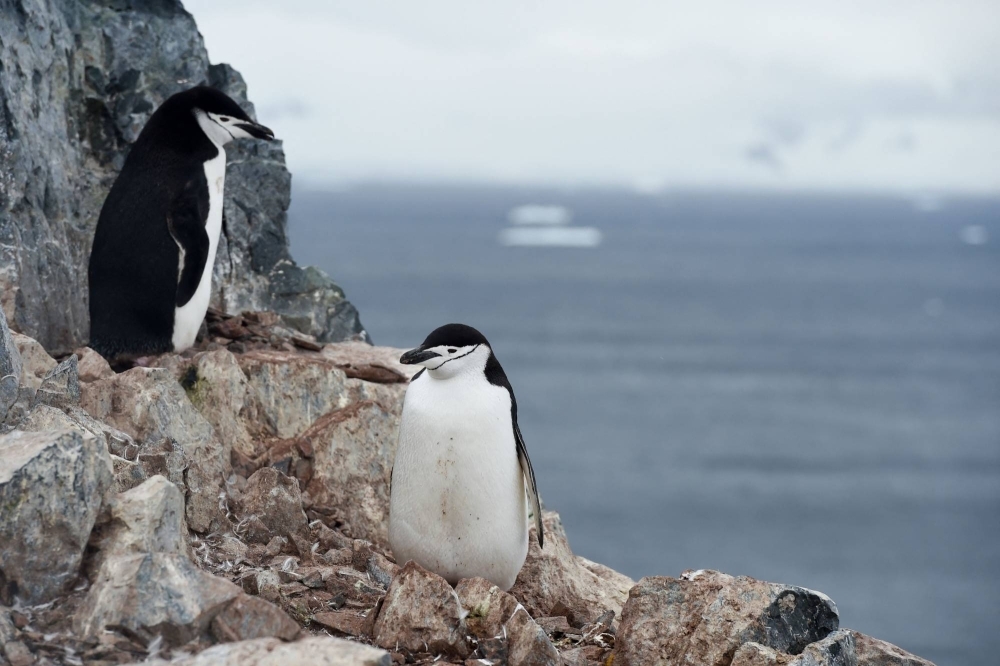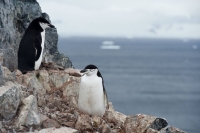Along the rocky and ice-free Antarctic coastline, chinstrap penguins by the millions form bustling breeding colonies — chaotic, noisy and, yes, smelly — every year, laying eggs in November that hatch in late December and January.
Guarding their nests is serious business for these midsize penguins, with predatory seabirds called brown skuas on the prowl. Falling asleep on the job can spell doom for the eggs and later the chicks. But this species, scientists said on Thursday, has devised an ingenious way of getting sufficient sleep without compromising vigilance.
The researchers documented extreme sleep behavior in these flightless birds. Rather than sleeping for prolonged periods during the nesting period, chinstraps nod off thousands of times daily — for only around four seconds at a time — and meet their sleep needs cumulatively, amassing about 11 hours per day.
"They show an unexpected sleep adaptation, a tradeoff between the need to sleep and the need to be awake," said ecophysiologist Paul-Antoine Libourel of the Lyon Neuroscience Research Centre in France, lead author of the research published in the journal Science.
"This has not been documented before," said behavioral ecologist and study co-leader Won Young Lee of the Korea Polar Research Institute in Incheon, South Korea.
The researchers gathered data on 14 penguins incubating eggs in a colony with approximately 3,000 breeding pairs on Antarctica's King George Island in December 2019. They measured electrical activity in the brain — evidence of sleep activity — using a method called electroencephalography. The researchers also took videos of the birds and used other biologging devices such as GPS monitors and accelerometers to track their location and body movements.
While guarding their nests, the chinstraps engaged in what are called microsleeps — interruptions of wakefulness for a span of mere seconds by eye closure and sleep-related brain activity — on average about 10,000 times daily and sometimes up to 15,000 times. Sleep occurred while they were standing or lying down.
Sleep is a precious commodity for people and across the animal kingdom for its restorative value and other purposes. In people, microsleeps can be dangerous — while driving, for instance. Not so for chinstraps.
"Penguins do not display any obvious negative consequence of sleep fragmentation," Libourel said. "Because the birds can reproduce and forage efficiently, we do believe that the function of sleep can be fulfilled even when sleep is disturbed in such a manner."
Lee said some other animals may use similar sleep strategies, though it has not yet been documented.
Chinstrap penguins are so named because of the black band of feathers under their chin that looks like, well, a chin strap. Adults stand between about 70 to 80 centimeters tall and weigh about 3 to 6 kilograms. They are one of the most abundant penguins in the Antarctic region.
They typically remain with the same breeding partner year in and year out, in a sort of avian marriage. Females usually lay two eggs in a circular nest fashioned from stones, with chicks hatching about 37 days later. During nesting, the males and females share parenting duties, with one guarding the eggs or chicks continuously while the other forages in the frigid ocean for several days.
During incubation, skuas prey on penguin eggs, particularly on a colony's periphery. The chinstraps also must defend their nests from intrusions by other penguins in the crowded and cacophonous colony.
"It is an incredible landscape — changing, not so cold, with a mean temperature around 1 degree Celsius. But sometimes very windy, with snowfall," Libourel said.
"As a field biologist, I have observed penguins since 2014. The penguin colony is located near the coast. It is quite stinky due to the penguin feces. Also, it is so noisy with the penguin calls," Lee added.




